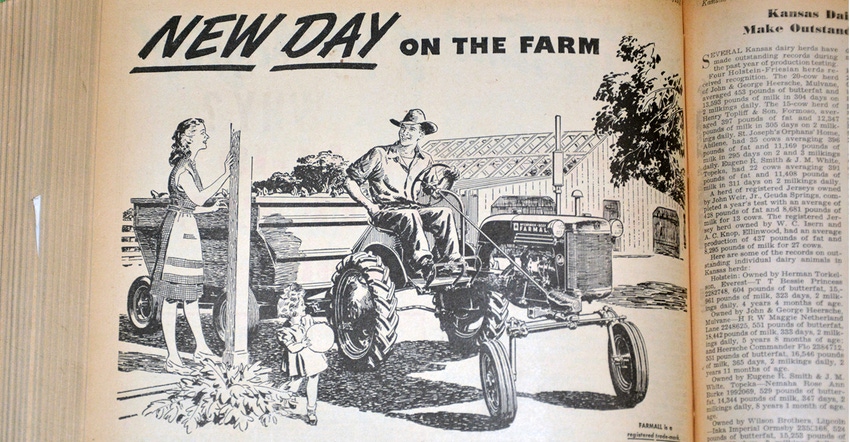July 24, 2017

The news in tractors in September of 1947 was the Farmall Cub tractor, advertised as making work faster and easier with all-purpose capacity and economy for small farms and truck gardens.
The Cub came with its own full line of matched, specially-designed implements, including four plows, a planter, cultivators and a mower with a 4.5-foot swath. The price tag was a reasonable $545 for the basic tractor.
60 years ago
Fire destroyed East Waters Hall on the Kansas State University campus in Manhattan in 1957.The fire wiped out the flour milling plant, but the records of the agronomy department, stored in the building since 1913, were saved.
East Waters Hall housed the agronomy department, the flour milling plant, the Kansas Crop Improvement Association, the USDA Hard Wheat Quality Testing Laboratory and the Federal Soils Laboratory. The lost was estimated at $1.5 million.
50 years ago
Goerge Larson, a Kansas State University engineer, warned farmers that lightning could be wearing out fences. He had learned that ungrounded barbed wire fence on wood posts showed signs of rusting and pitting in just a few years while similar, grounded fences in the same area still had their protective, galvanized coating after 20 years.
Larson said the best way to ground a fence is to use twisted wire stays that are embedded deep enough to make firm contact with the soil.
He said the stays also improved the sturdiness of the fence and could be placed as often as every 20 feet.
30 years ago
The search was on to discover the best way to fight noxious weeds back in the fall of 1987. There were advocates for chemical control and others for mechanical control. There was also a fight over how to administer the funds that were designated to help farmers battle infestations of noxious weeds.
On the list of noxious weeds in 1987 were these 11: musk thistle, johnsongrass, bindweed, Canada thistle, bur ragweed, leafy spurge, hoary cress, Russian knapweed, quackgrass, pignut and kudzu. The weed that started it all, field bindweed, was still so prevalent that many landowners called the law the “bindweed law” rather than the “noxious weed law.”
20 years ago
New from Hesston in the fall of 1997 was the Hesston 8400 self-propelled windrower. Introduced more than 40 years after Hesston brought farmers the first self-propelled windrower, the new machine offered a new cab and controls designed to provide enhanced operator comfort. The model 8400 also had a new, more powerful, 110-horsepower, turbo-charged Cummins diesel engine mated to a variable two-speed hydrostatic drive transmission. For the first time, the entertainment of the operator was also in play. The new Hesston 8400 offered a factory-installed AF/F, cassette player.
Goerzen is executive director of Old Cowtown Museum in Wichita, where she lives with husband, Matt,and four children.
About the Author(s)
You May Also Like




